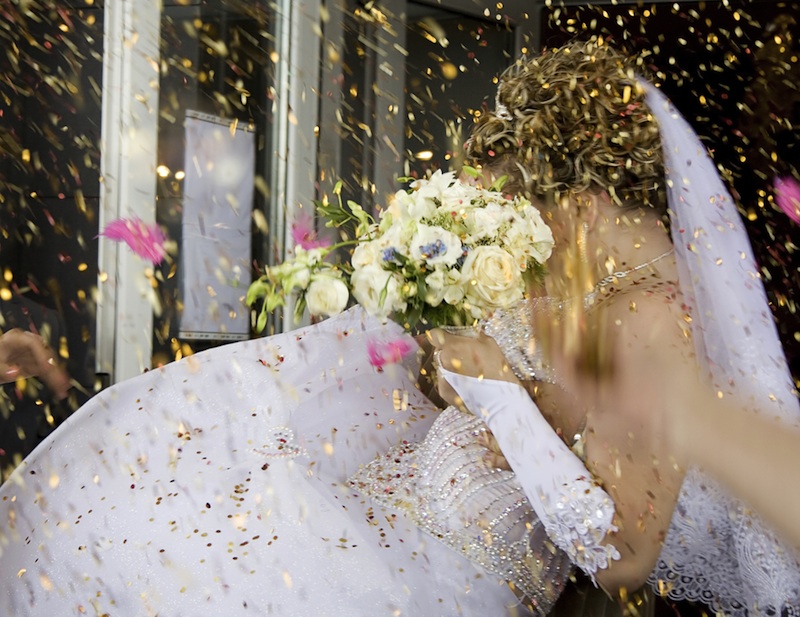Summer Brides: 5 Wedding Traditions from Around the World

Wedding season has officially started, as couples across the United States walk down the aisle to tie the knot. That's right, the summer months of June, July and August bustle with nuptials, according to a survey by XO Group Inc., creator of TheKnot.com and WeddingChannel.com.
The Real Weddings Survey, released in March, found 37 percent of U.S. weddings take place in the summer months, down from 41 percent in 2010. And while you may know of many American wedding traditions — from the bride throwing the bouquet and the bride's father walking her down the aisle to music and merriment after the vows — cultures around the world have their own, perhaps lesser known, traditions. [Infographic: Marriage & Divorce Statistics]
Here are some wedding rituals from around the world that go beyond the white dress and veil.
1. Wardrobe Change: In modern China, brides pick not one wedding dress, but three. First, there's the traditional qipao or cheongsam, an embroidered, slim-fitting frock that's usually made red for weddings, because red is a strong, lucky color in Chinese culture. Next, the bride might swap into a white poufed ball gown that wouldn't look out of place at an American wedding — a bridal nod to the popularity of Western trends. Finally, the bride ducks out of the reception to change into a third dress, this one a gown of her color choice or a cocktail dress.
2. Painted Hands: Before an Indian bride gets married, she and her female friends and family decorate their hands and feet with elaborate designs called menhdi. These temporary designs are made from the plant dye henna, and they last just a few weeks. The menhdi designs are incredibly intricate and take hours to apply, not including the time the bride must wait for the henna paste to dry and stain her skin. Turning the occasion into a "mehndi party" makes the process more fun — and provides some friends and family to help the bride out if she needs anything while she's being adorned.
3. Mazel Tov! The breaking of the glass in Jewish weddings, in which the groom crushes a glass under his foot at the end of the ceremony, is a tradition with murky roots. Some hold that the breaking glass symbolizes the destruction of the great Temple in Jerusalem in A.D. 70, while others say that the broken glass is a reminder that joy should always be tempered. Either way, breaking the glass is usually undertaken in the spirit of happiness today, with wedding guests calling out "mazel tov!" (good luck!) after the glass shatters. [6 Scientific Tips for a Successful Marriage]
4. Ransom for the Bride: Russian grooms have to work for their brides. Before the wedding, the groom shows up at the bride's home and asks for his beloved. In jest, her friends and family refuse him until he pays up in gifts, money, jewelry or simple humiliation. Grooms are forced to do silly dances, answer riddles, and perform goofy tests of worthiness like diapering a baby doll. Once the groom impresses friends and family with this bridal ransom, or "vykup nevesty," he's allowed to meet his bride-to-be.
Sign up for the Live Science daily newsletter now
Get the world’s most fascinating discoveries delivered straight to your inbox.
5. Ransom for the Shoes: While Russian grooms are ransoming their brides, Pakistani men have to pay up if they want to keep their shoes. After a Pakistani wedding, the couple returns home for a ceremony called the "showing of the face." Family and friends hold a green shawl over the couple's heads and a mirror as the bride removes the veil she wears throughout the wedding ceremony. While the newlyweds are busy gazing at one another, the bride's female relatives make off with the groom's shoes and demand money for their safe return.

Stephanie Pappas is a contributing writer for Live Science, covering topics ranging from geoscience to archaeology to the human brain and behavior. She was previously a senior writer for Live Science but is now a freelancer based in Denver, Colorado, and regularly contributes to Scientific American and The Monitor, the monthly magazine of the American Psychological Association. Stephanie received a bachelor's degree in psychology from the University of South Carolina and a graduate certificate in science communication from the University of California, Santa Cruz.









